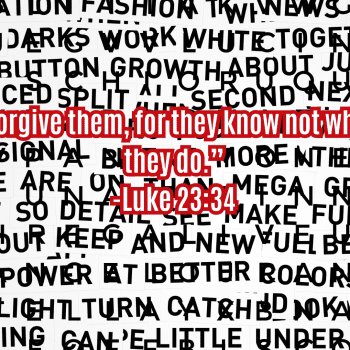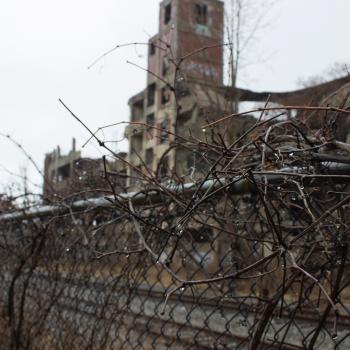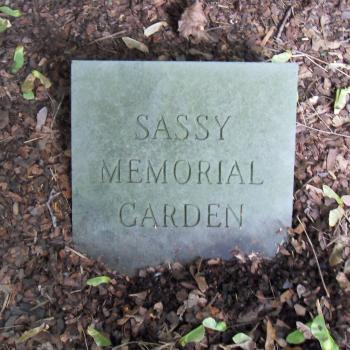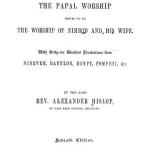 When I finished reading Paul Anel’s article on the chapel art of Sean Scully, in the current Image (#91), I was moved to close my eyes in prayer. It wasn’t verbal prayer. It was a sitting within a sense of the sacred.
When I finished reading Paul Anel’s article on the chapel art of Sean Scully, in the current Image (#91), I was moved to close my eyes in prayer. It wasn’t verbal prayer. It was a sitting within a sense of the sacred.
Both Scully’s art and Anel’s graced account of it had drawn me into this sacred space. Anel focuses on Scully’s transformation of an ancient, crumbling building—the Chapel of Santa Cecilia on the grounds of Montserrat Abbey in Spain—into a glistening, vibrant work of art: indeed the article is titled “Gathering the Light.”
There’s no point in my repeating Anel’s account here; you can read it in Image online. What I want to ponder instead is, first, what drew me into prayer on finishing the article. Partly, I think, it was the humility of both Scully and Anel. Neither calls attention to himself in his work, whether visual art or prose.
We don’t learn that Anel is a priest until the penultimate paragraph, when he recounts celebrating the first Mass in the newly reborn chapel. And Anel has discussed Scully’s “humility and objectivity” in keeping himself out of his art. Not totally, because any art has to come out of the artist’s soul and life experience.
For instance, a tragedy in Scully’s life (the death of his nineteen-year-old son in a car crash) appears in one of the chapel’s abstract paintings: blocks of black, grey, and white oils painted onto aluminum. “The placement of this painting in the chapel,” Anel writes, “transforms the tragedy into an offering, the failure into a prayer.”
Anel’s essay draws me, further, to muse—beyond its specific content—on its perfect match of prose with visual art. What accounts for this match, I wonder? It happens not only in this particular essay, but in all the articles in Image on a specific artist (usually two per issue). It helps that we’re given color plates of each artist’s work, so we can see at least some of what the essayist is describing. But without the writer’s prose, these plates would be close to meaningless.
By comparison, I think of prose about music. I go to many classical music concerts, and I’m fairly literate in music; yet I nearly always find the program notes incomprehensible. Is it because music can’t be held still? You can’t experience a piece of music all-at-once, as you can a work of visual art.
The visual artwork stands still, letting an essayist’s prose move into and around it: out into the artist’s life, back into some dimension of the artwork, out again to comparison with other artists. And through all this dancing around of the prose, we can hold the artwork unmoving in front of us.
But if I were reading prose about a musical work called “Saint Cecilia,” the prose would dance around while the music moved onward as well. If I pause the music, all I’m hearing is a single note or chord, not the whole work.
Take, for instance, Anel’s discussion of one of the paintings in Scully’s chapel: that of the chapel’s namesake, Saint Cecilia. When I first look at this painting (it’s reproduced in Image), I see a pleasantly intriguing abstract work: a background of thick alternating red and gold horizontal stripes, onto which seem laid two horizontal rectangles—the top one white and covered with thin wavy horizontal black lines, the bottom one vertical bands of black and red.
That’s as far as I can get on my own. Here’s where Anel steps in to elucidate what these abstract shapes are depicting. The painting, he writes, tells the story of the fifth century Saint Cecilia. As a young woman she was brought to the Roman court by a man who hated Christians. She was instructed to sacrifice to pagan gods; if she refused, she would be killed.
She chose martyrdom, singing to God as the executioner approached. Scully’s upper inset, which looks a bit like a musical score, refers to her singing. It is, Anel writes, “a spiritual portrait of the patron saint of musicians.” The lower inset, with its harsh black and red vertical lines, evokes her beheading. Meanwhile, the painting’s background red and gold stripes are the flag of Catalonia, where this chapel stands.
As the patron saint of musicians, Cecilia has had many musical works composed for or about her. But, ironically, since I’ve said that (for me, anyway) music and prose don’t make a good match, prose about them would not help me understand them more deeply. And they’d have to be very simplistically programmatic for me to see the saint’s life in them. Whereas through Anel’s entry into this painting with his prose, I can see (and almost hear) Cecilia singing.
Finally, I want to return to my first reaction to reading Anel’s essay: being moved to silent prayer. In closing his essay, Anel reports Scully’s response when asked what he himself was most grateful for in the chapel he’d restored.
Scully replied: “The little frescoes on the wall, because they are the humblest part: You know, when you do something, no matter how big and expensive it is, its value will always lie in something very humble. It’s like love.”
And what is prayer but love?
Peggy Rosenthal is director of Poetry Retreats and writes widely on poetry as a spiritual resource. Her books include Praying through Poetry: Hope for Violent Times (Franciscan Media), and The Poets’ Jesus (Oxford). See Amazon for a full list. She also teaches an online course, “Poetry as a Spiritual Practice,” through Image’s Glen Online program.
Photo of Sean Scully via Wikimedia Commons, used with permission under a Creative Commons License.

















